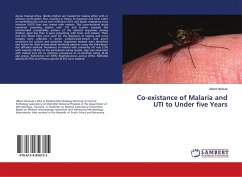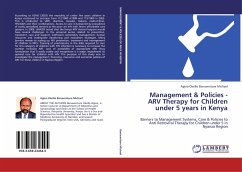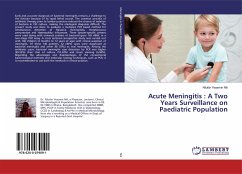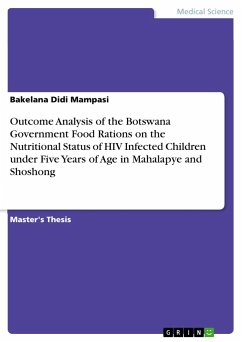
Co-existance of Malaria and UTI to Under five Years
Versandkostenfrei!
Versandfertig in 6-10 Tagen
27,99 €
inkl. MwSt.

PAYBACK Punkte
14 °P sammeln!
Across tropical Africa, febrile children are treated for malaria either with or without confirmation thus resulting in failure to diagnose and treat other co-morbidities like urinary tract infections (UTI) and upper respiratory tract infection (URTI) that may coexist with malaria. This cross-sectional study examined coexisting malaria with UTI and further assessed the antimicrobial susceptibility pattern of the isolated organisms among children aged less than 5 years presenting with fever and malaria. Thick and thin blood films were used for the diagnosis of malaria and urine samples were coll...
Across tropical Africa, febrile children are treated for malaria either with or without confirmation thus resulting in failure to diagnose and treat other co-morbidities like urinary tract infections (UTI) and upper respiratory tract infection (URTI) that may coexist with malaria. This cross-sectional study examined coexisting malaria with UTI and further assessed the antimicrobial susceptibility pattern of the isolated organisms among children aged less than 5 years presenting with fever and malaria. Thick and thin blood films were used for the diagnosis of malaria and urine samples were collected in sterile, widescrewed-mouth, leak proof containers for culture and sensitivity. Organisms isolated were identified and tested for their antimicrobial sensitivity patterns using the Kirby-Bauer disc diffusion method. Prevalence of malaria with coexisting UTI was 3.3% with majority (58.0%) of the participants being female. Age was associated with malaria and UTI co infection prevalenceof co-infection being 24-36 age group. Escherichia coli (50%) Staphylococcus aureus (25%), Klebsiella species(16.70%) and Proteus species (8.3%) were isolated.












